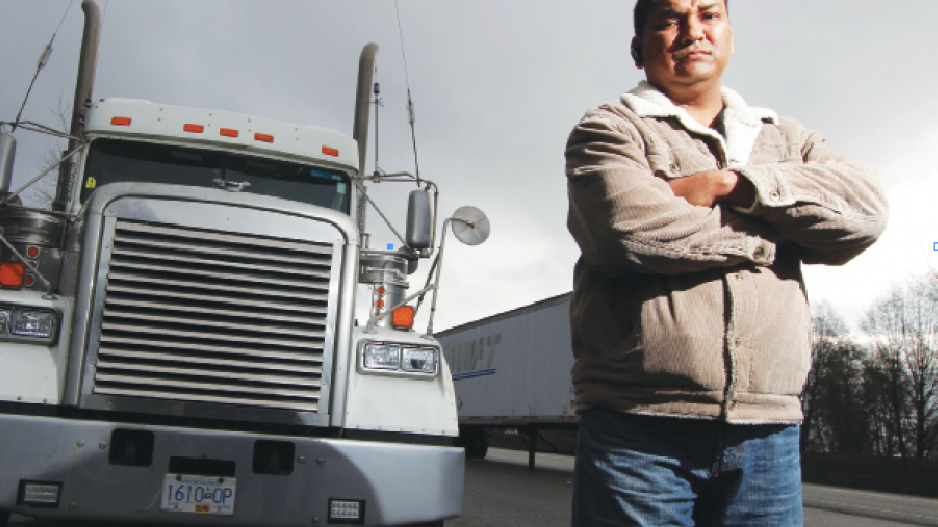While drivers, dispatchers and mechanics are reeling from the potential loss of 600 jobs due to Port Metro Vancouver’s new truck licensing system, one supply chain observer is questioning whether the move will improve productivity at Canada’s biggest port.
“Last year when they thought they were going to strike, the question was long truck [waiting] times due to the issues at the marine container terminals,” said Darryl Anderson, managing director of Wave Point Consulting, referring to a March 2014 truck strike that stalled Port Metro Vancouver container traffic for a month.
Truck owners said the long wait times restricted the number of jobs they could do and ate into their wages.
“Here we are, nine months later, and the issue’s morphed into we have too many trucks in the system, here are our changes, let’s get on with it and life will be better.
“They’ve gone down that path, and I think we’ve taken a significant detour. I’m not really sure what comes next.”
Ken Rakhra, who has owned a small, five-truck company for 10 years, did not receive any licences to access the port; Michelle Mann, a
dispatcher at Safeway Trucking, and her husband, a truck driver, both expect to be out of work because of the change.
Port Metro Vancouver has said it was necessary to reduce the number of trucks to prevent persistent undercutting in the industry, which was eroding truckers’ wages. The current drayage fleet is 2,000 trucks; the port authority has reduced that by 550 by awarding 1,450 truck licences to 68 trucking companies.
Labour mediator Vince Ready, who mediated during the March strike, also identified the problem of too many truckers competing for too few containers in his September 2014 report.
The port said it is offering a “generous transition program to eligible [truck] owner-operators, provided there is no disruption that impacts container movements to the port.”
But Rakhra and Mann say they don’t understand how Port Metro determined the winners and losers in the new system.
“They didn’t post on their website why some companies got approved, why some companies didn’t get approved,” Rakhra said. “I’m thinking I’m where I was 10 years ago.”
The company Mann works for has done port trucking since 1971. She questioned why some companies seem to have gotten many licences, while others have been left with none.
Truckers have held several rallies and intend to keep up the pressure until Port Metro Vancouver reviews the truck licensing process, Mann said. On January 30, a law firm representing truckers sent a letter to Port Metro Vancouver, stating that "in our view, the new TLS has clearly been implemented in a manner which violates our clients' rights and further, is paft of a statutory framework which is constitutionally unsound."
New TLS Licensing System Constitutionally Unsound
Anderson said the way the port authority has cut the number of trucks raises questions about equity and fairness. The new requirements include a steeply increased licence fee and a $250,000 bond for the first 20 trucks. Trucks can no longer be more than 10 years old, which also adds to the expense for smaller companies.
Large companies can fulfil those requirements more easily, both in terms of financial capacity and knowledge about bonding and insurance requirements, said Anderson. He believes the policy could have been implemented with more time given to all companies to learn how to meet the new requirements.
Truck waiting times have improved since the March 2014 strike, said Mann. A GPS system installed to get accurate data on truck movements and adding a night shift to terminals appear to have helped reduce wait times.
But Anderson questioned whether those improvements will last and whether there has been enough focus and co-operation on improving terminal productivity.
For example, when ports in Australia had similar trucking issues, “the Australian competition commission … said the marine terminals have a certain amount of market power and if they’re not providing a level of service, we’re going to impose minimum requirements on them for trucking [wait] times,” Anderson said.
By reducing the truck fleet, the port could also be setting itself up for future labour shortages.
“When you restrict market entry in this fashion, how flexible is the system going forward to handle both downturns and growth?” Anderson said.
@jenstden




